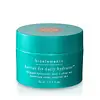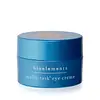What's inside
What's inside
 Key Ingredients
Key Ingredients

 Benefits
Benefits

 Concerns
Concerns

 Ingredients Side-by-side
Ingredients Side-by-side

Water
Skin ConditioningHelianthus Annuus Seed Oil
EmollientGlycerin
HumectantSclerocarya Birrea Seed Oil
HumectantTetradecane
PerfumingGlycereth-26
HumectantAllantoin
Skin ConditioningMagnesium Carboxymethyl Beta-Glucan
Skin ConditioningCeramide NP
Skin ConditioningTocopheryl Acetate
AntioxidantCannabis Sativa Seed Oil
EmollientPanthenol
Skin ConditioningCeramide AP
Skin ConditioningRosmarinyl Glucoside
AntioxidantPolyacrylamide
Caprylic/Capric Triglyceride
MaskingHydrolyzed Sodium Hyaluronate
Skin ConditioningLaureth-7
EmulsifyingTremella Fuciformis Sporocarp Extract
AntioxidantSodium Phytate
Lavandula Hybrida Oil
EmollientLavandula Angustifolia Oil
MaskingPelargonium Graveolens Flower Oil
MaskingRosmarinus Officinalis Leaf Oil
MaskingSalvia Sclarea Oil
MaskingSantalum Album Oil
MaskingCaffeyl Glucoside
AntioxidantGallyl Glucoside
AntioxidantAcrylates/C10-30 Alkyl Acrylate Crosspolymer
Emulsion StabilisingPhenoxyethanol
PreservativeC13-14 Isoparaffin
EmollientEthylhexylglycerin
Skin ConditioningPotassium Sorbate
PreservativeVitis Vinifera Seed Oil
EmollientSodium Hydroxide
BufferingWater, Helianthus Annuus Seed Oil, Glycerin, Sclerocarya Birrea Seed Oil, Tetradecane, Glycereth-26, Allantoin, Magnesium Carboxymethyl Beta-Glucan, Ceramide NP, Tocopheryl Acetate, Cannabis Sativa Seed Oil, Panthenol, Ceramide AP, Rosmarinyl Glucoside, Polyacrylamide, Caprylic/Capric Triglyceride, Hydrolyzed Sodium Hyaluronate, Laureth-7, Tremella Fuciformis Sporocarp Extract, Sodium Phytate, Lavandula Hybrida Oil, Lavandula Angustifolia Oil, Pelargonium Graveolens Flower Oil, Rosmarinus Officinalis Leaf Oil, Salvia Sclarea Oil, Santalum Album Oil, Caffeyl Glucoside, Gallyl Glucoside, Acrylates/C10-30 Alkyl Acrylate Crosspolymer, Phenoxyethanol, C13-14 Isoparaffin, Ethylhexylglycerin, Potassium Sorbate, Vitis Vinifera Seed Oil, Sodium Hydroxide
Water
Skin ConditioningPrunus Amygdalus Dulcis Oil
Skin ConditioningCyclopentasiloxane
EmollientDimethicone
EmollientCaprylic/Capric Triglyceride
MaskingGlyceryl Stearate
EmollientPEG-100 Stearate
Cyclohexasiloxane
EmollientCetearyl Alcohol
EmollientStearic Acid
CleansingMethyl Gluceth-20
HumectantSodium Hyaluronate
HumectantThioctic Acid
AntioxidantCamellia Sinensis Leaf Extract
AntimicrobialTocopheryl Acetate
AntioxidantPhytonadione Epoxide
AstringentGynostemma Pentaphyllum Extract
AstringentPanax Ginseng Root Extract
EmollientRetinyl Palmitate
Skin ConditioningAllantoin
Skin ConditioningCaprylyl Glycol
EmollientButyrospermum Parkii Butter
Skin ConditioningCucumis Sativus Fruit Extract
EmollientSodium Carboxymethyl Beta-Glucan
CleansingAloe Barbadensis Leaf Juice
Skin ConditioningTetrahexyldecyl Ascorbate
AntioxidantAscorbic Acid
AntioxidantPanthenol
Skin ConditioningCarbomer
Emulsion StabilisingGlycerin
HumectantDisodium EDTA
Phenoxyethanol
PreservativeEthylhexylglycerin
Skin ConditioningHexylene Glycol
EmulsifyingTromethamine
BufferingAcacia Senegal Gum
MaskingSucrose
HumectantWater, Prunus Amygdalus Dulcis Oil, Cyclopentasiloxane, Dimethicone, Caprylic/Capric Triglyceride, Glyceryl Stearate, PEG-100 Stearate, Cyclohexasiloxane, Cetearyl Alcohol, Stearic Acid, Methyl Gluceth-20, Sodium Hyaluronate, Thioctic Acid, Camellia Sinensis Leaf Extract, Tocopheryl Acetate, Phytonadione Epoxide, Gynostemma Pentaphyllum Extract, Panax Ginseng Root Extract, Retinyl Palmitate, Allantoin, Caprylyl Glycol, Butyrospermum Parkii Butter, Cucumis Sativus Fruit Extract, Sodium Carboxymethyl Beta-Glucan, Aloe Barbadensis Leaf Juice, Tetrahexyldecyl Ascorbate, Ascorbic Acid, Panthenol, Carbomer, Glycerin, Disodium EDTA, Phenoxyethanol, Ethylhexylglycerin, Hexylene Glycol, Tromethamine, Acacia Senegal Gum, Sucrose
Ingredients Explained
These ingredients are found in both products.
Ingredients higher up in an ingredient list are typically present in a larger amount.
Allantoin is a soothing ingredient known for its protective and moisturizingg properties. Because of this, it is often added to products with strong active ingredients.
Studies show higher concentrations of this ingredient can promote wound healing.
Though it can be derived from the comfrey plant, allantoin is produced synthetically for cosmetic products to ensure purity.
Learn more about AllantoinThis ingredient is an emollient, solvent, and texture enhancer. It is considered a skin-softener by helping the skin prevent moisture loss.
It helps thicken a product's formula and makes it easier to spread by dissolving clumping compounds.
Caprylic Triglyceride is made by combining glycerin with coconut oil, forming a clear liquid.
While there is an assumption Caprylic Triglyceride can clog pores due to it being derived from coconut oil, there is no research supporting this.
Learn more about Caprylic/Capric TriglycerideEthylhexylglycerin (we can't pronounce this either) is commonly used as a preservative and skin softener. It is derived from glyceryl.
You might see Ethylhexylglycerin often paired with other preservatives such as phenoxyethanol. Ethylhexylglycerin has been found to increase the effectiveness of these other preservatives.
Glycerin is already naturally found in your skin. It helps moisturize and protect your skin.
A study from 2016 found glycerin to be more effective as a humectant than AHAs and hyaluronic acid.
As a humectant, it helps the skin stay hydrated by pulling moisture to your skin. The low molecular weight of glycerin allows it to pull moisture into the deeper layers of your skin.
Hydrated skin improves your skin barrier; Your skin barrier helps protect against irritants and bacteria.
Glycerin has also been found to have antimicrobial and antiviral properties. Due to these properties, glycerin is often used in wound and burn treatments.
In cosmetics, glycerin is usually derived from plants such as soybean or palm. However, it can also be sourced from animals, such as tallow or animal fat.
This ingredient is organic, colorless, odorless, and non-toxic.
Glycerin is the name for this ingredient in American English. British English uses Glycerol/Glycerine.
Learn more about GlycerinPanthenol is a common ingredient that helps hydrate and soothe the skin. It is found naturally in our skin and hair.
There are two forms of panthenol: D and L.
D-panthenol is also known as dexpanthenol. Most cosmetics use dexpanthenol or a mixture of D and L-panthenol.
Panthenol is famous due to its ability to go deeper into the skin's layers. Using this ingredient has numerous pros (and no cons):
Like hyaluronic acid, panthenol is a humectant. Humectants are able to bind and hold large amounts of water to keep skin hydrated.
This ingredient works well for wound healing. It works by increasing tissue in the wound and helps close open wounds.
Once oxidized, panthenol converts to pantothenic acid. Panthothenic acid is found in all living cells.
This ingredient is also referred to as pro-vitamin B5.
Learn more about PanthenolPhenoxyethanol is a preservative that has germicide, antimicrobial, and aromatic properties. Studies show that phenoxyethanol can prevent microbial growth. By itself, it has a scent that is similar to that of a rose.
It's often used in formulations along with Caprylyl Glycol to preserve the shelf life of products.
Tocopheryl Acetate is AKA Vitamin E. It is an antioxidant and protects your skin from free radicals. Free radicals damage the skin by breaking down collagen.
One study found using Tocopheryl Acetate with Vitamin C decreased the number of sunburned cells.
Tocopheryl Acetate is commonly found in both skincare and dietary supplements.
Learn more about Tocopheryl AcetateWater. It's the most common cosmetic ingredient of all. You'll usually see it at the top of ingredient lists, meaning that it makes up the largest part of the product.
So why is it so popular? Water most often acts as a solvent - this means that it helps dissolve other ingredients into the formulation.
You'll also recognize water as that liquid we all need to stay alive. If you see this, drink a glass of water. Stay hydrated!
Learn more about Water